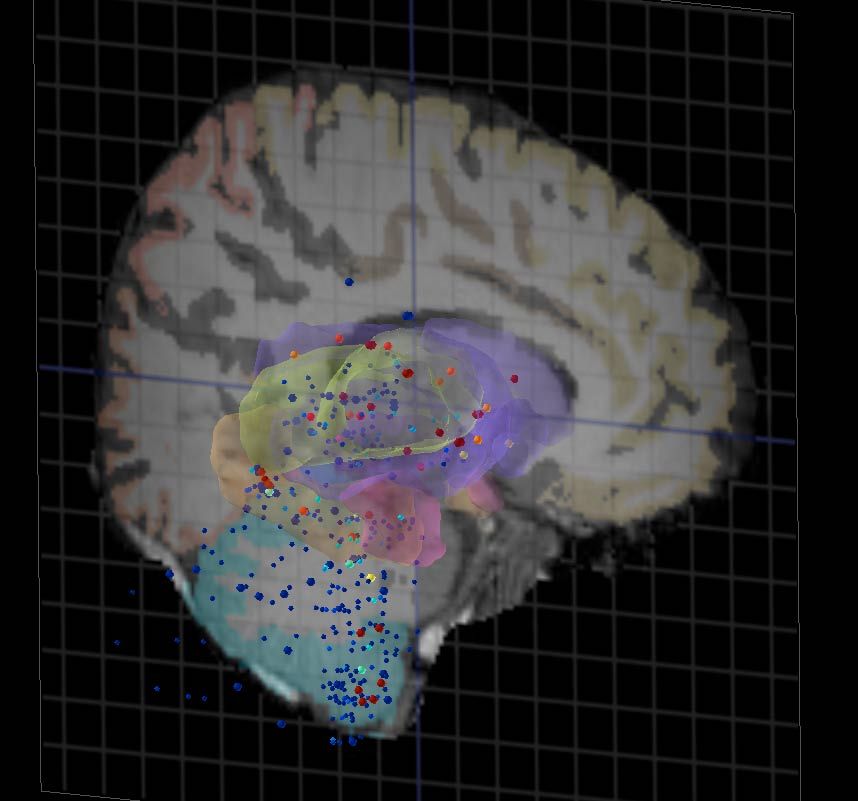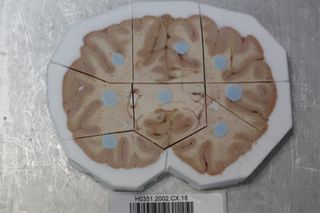New Atlas May Help Solve Mysteries of the Human Brain

The genetic differences between normal and abnormal human brains may be determined one day from a "brain atlas" scientists are refining.
The scientists have compiled high-resolution maps of genetic activity in the adult human brain based on the complete brains of two men as well as a hemisphere from a third man's brain, all of the tissue healthy when the men died. The researchers are making their data freely accessible online to aid in studies of normal and abnormal human brain function.
"By themselves these data do not hold all of the answers for understanding how the brain works or what are the genetic underpinnings of disease," researcher Ed Lein, a neuroscientist at the Allen Institute for Brain Science in Seattle, told LiveScience. "However, we hope they serve as a catalyst in human brain research for understanding the brain's complex chemistry and cellular makeup, what goes awry in disease, and how best to design and test treatments for disease."
Identifying where and when genes are active or expressed within the brain is a titanic endeavor. In fact, ever since the human genome was completely sequenced nearly a decade ago, researchers have strived to identify what exactly each gene might do, with great interest focused on any genes related to the brain.
The main challenge when it comes to understanding the human brain is the fact that it is the most powerful computer known. It consists of approximately 100 billion neurons with roughly 1 quadrillion (1 million billion) connections wiring these cells together, and each connection or synapse typically fires about 10 times per second.
For a few years scientists have possessed highly detailed maps of which genes are expressed in the mouse brain, but maps of its human counterpart had been relatively imprecise until now, due in part to the thousandfold difference in size and the difficulty in getting human brains for analysis. [See Images of the 3D Brain Slices]
The three men's brains were first scanned with functional magnetic resonance imaging (fMRI) to capture their precise anatomical details. The researchers then cut up the brain into many tiny slices and chemically analyzed genetic activity within about 900 precise areas.
Sign up for the Live Science daily newsletter now
Get the world’s most fascinating discoveries delivered straight to your inbox.

"This process is extremely labor-intensive and takes approximately nine months to process a single brain," Lein said. "We are currently in the process of analyzing additional specimens."
Genetic activity was remarkably similar between the two complete brains. This suggested a strong underlying common genetic blueprint for the human brain.
About half of all genes active in the brain have been poorly studied, Lein said. "The fact that so many of the brain-expressed genes have not been well-characterized means that there are huge voids in our understanding of how genes relate to proper brain function," he said. "Many of these genes are used in highly selective ways — in particular structures and cell types — and this map we have created can provide functional predictions to catalyze a wave of new research in molecular brain research."
When the researchers concentrated on the neocortex, which is the center of higher mental function in humans, they found gene activity was largely the same throughout it. Still, distinct patterns were seen within the areas linked with the senses and voluntary movements, and higher activity was seen in the frontal lobe, which is linked with behavior, planning, learning and personality.
The new atlas also will allow brain comparisons between humans and other animals such as mice and monkeys, which will help researchers see how brain research on lab animals may or may not reflect the human condition. As such, it may shed light on whether drugs meant to treat mental disorders actually work or not.
"One obvious direction in future human brain profiling is to push towards increasingly fine cellular resolution, even down to individual cells in the brain," Lein said. "Another major direction is to begin comparing normal gene expression patterns to those in neurological and neuropsychiatric diseases in order to help speed our understanding of how such diseases unfold in the brain and identify promising avenues for development of new therapies."
The scientists detail their findings in the Sept. 20 issue of the journal Nature.
Follow LiveScience on Twitter @livescience. We're also on Facebook & Google+.
